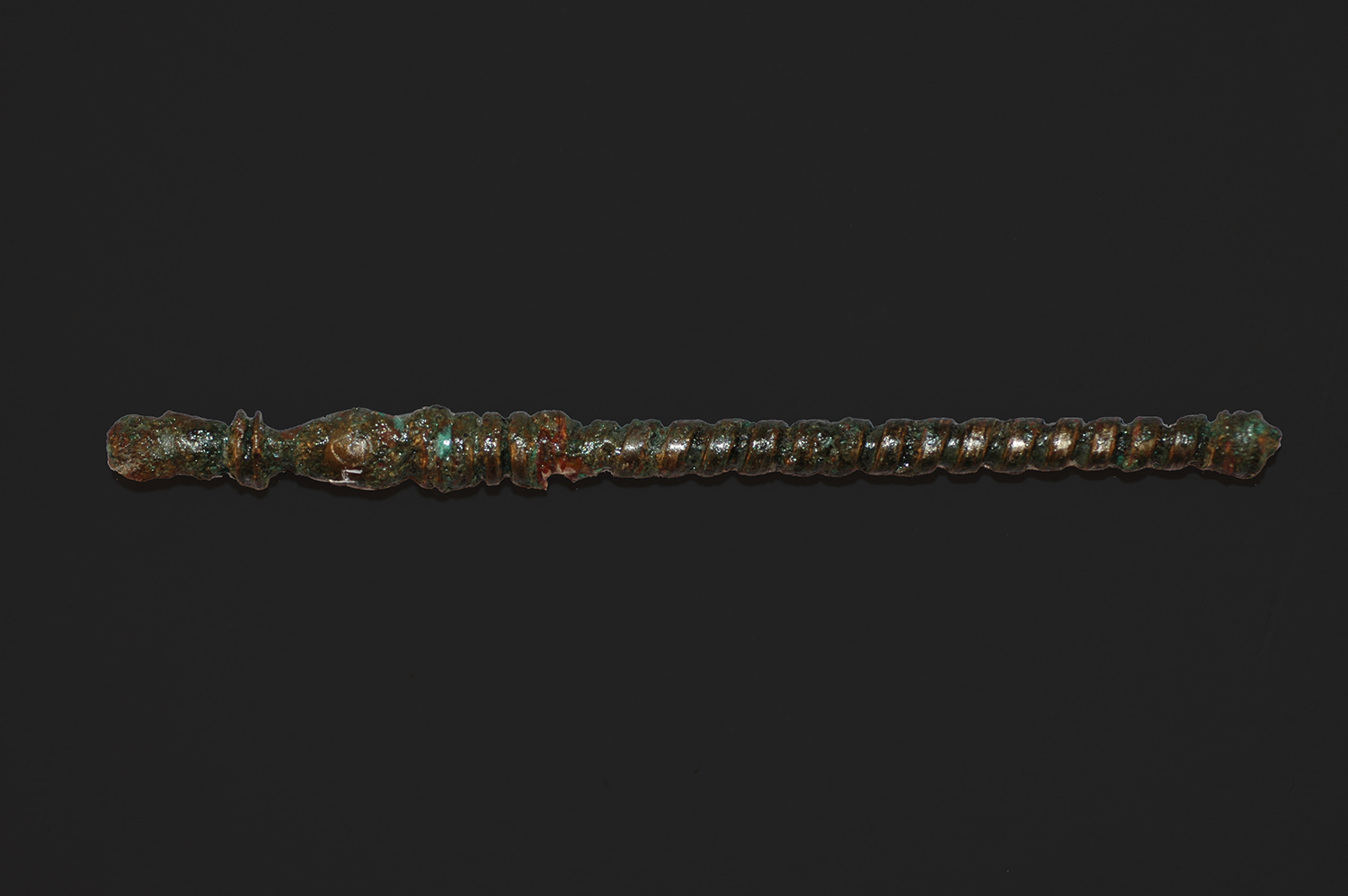
Bronze
2nd-3rd c. AD
Tolegassos (Viladamat - Alt Empordà)
This bronze surgical instrument comes from the Roman villa of Tolegassos (Viladamat, Alt Empordà) and dates from the late second and early third century AD. It is a needle for cataract surgery.
It consists of a very fine needle welded to a handle and covered by a kind of movable sheath that allowed it to be manipulated to extract the cataract. In our case, the needle has been lost and only the handle and sheath are preserved, with the hole that allowed the needle to move.
Roman doctors and surgeons had a wide and varied range of instruments with which to practice their profession. These instruments show in many cases a very high level of specialisation and can still be recognised by today’s doctors and surgeons.
In Book VII of De Medicina, Aulus Cornelius Celsus, a first-century-AD Roman writer, describes cataracts and meticulously details the surgical procedure used by oculists to remove them, a process for which these needles were used.
Compared to other Roman surgical instruments, cataract needles of various types are quite scarce. Just over half a dozen are known in the whole of the Iberian Peninsula. Hence the importance of the Tolegassos needle. We must also take into account the fact that, despite being a very specialised type of instrument, it was found, along with other surgical instruments, in an agricultural villa.
